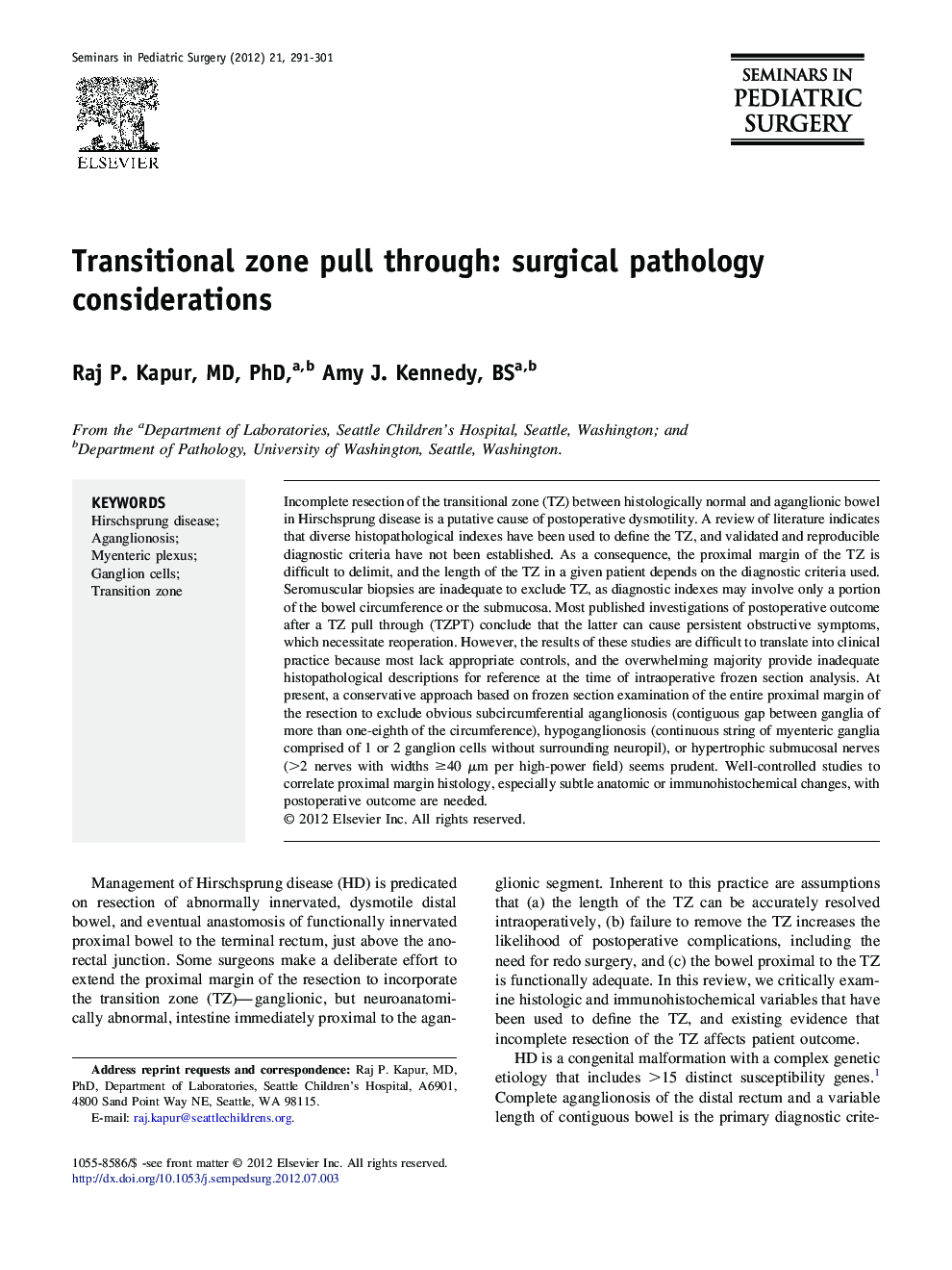| Article ID | Journal | Published Year | Pages | File Type |
|---|---|---|---|---|
| 4176500 | Seminars in Pediatric Surgery | 2012 | 11 Pages |
Incomplete resection of the transitional zone (TZ) between histologically normal and aganglionic bowel in Hirschsprung disease is a putative cause of postoperative dysmotility. A review of literature indicates that diverse histopathological indexes have been used to define the TZ, and validated and reproducible diagnostic criteria have not been established. As a consequence, the proximal margin of the TZ is difficult to delimit, and the length of the TZ in a given patient depends on the diagnostic criteria used. Seromuscular biopsies are inadequate to exclude TZ, as diagnostic indexes may involve only a portion of the bowel circumference or the submucosa. Most published investigations of postoperative outcome after a TZ pull through (TZPT) conclude that the latter can cause persistent obstructive symptoms, which necessitate reoperation. However, the results of these studies are difficult to translate into clinical practice because most lack appropriate controls, and the overwhelming majority provide inadequate histopathological descriptions for reference at the time of intraoperative frozen section analysis. At present, a conservative approach based on frozen section examination of the entire proximal margin of the resection to exclude obvious subcircumferential aganglionosis (contiguous gap between ganglia of more than one-eighth of the circumference), hypoganglionosis (continuous string of myenteric ganglia comprised of 1 or 2 ganglion cells without surrounding neuropil), or hypertrophic submucosal nerves (>2 nerves with widths ≥40 μm per high-power field) seems prudent. Well-controlled studies to correlate proximal margin histology, especially subtle anatomic or immunohistochemical changes, with postoperative outcome are needed.
